Introduction to Haworthia Fasciata
Imagine a little green gem with bold, white stripes adorning your windowsill, exuding charm and simplicity. Welcome to the world of Haworthia fasciata, also affectionately known as the ‘Zebra Plant’. A small and robust succulent, it steals the show with its understated elegance and hearty resilience. Not only does it bring a touch of the exotic to any room, but it’s incredibly forgiving, thriving with minimal care.
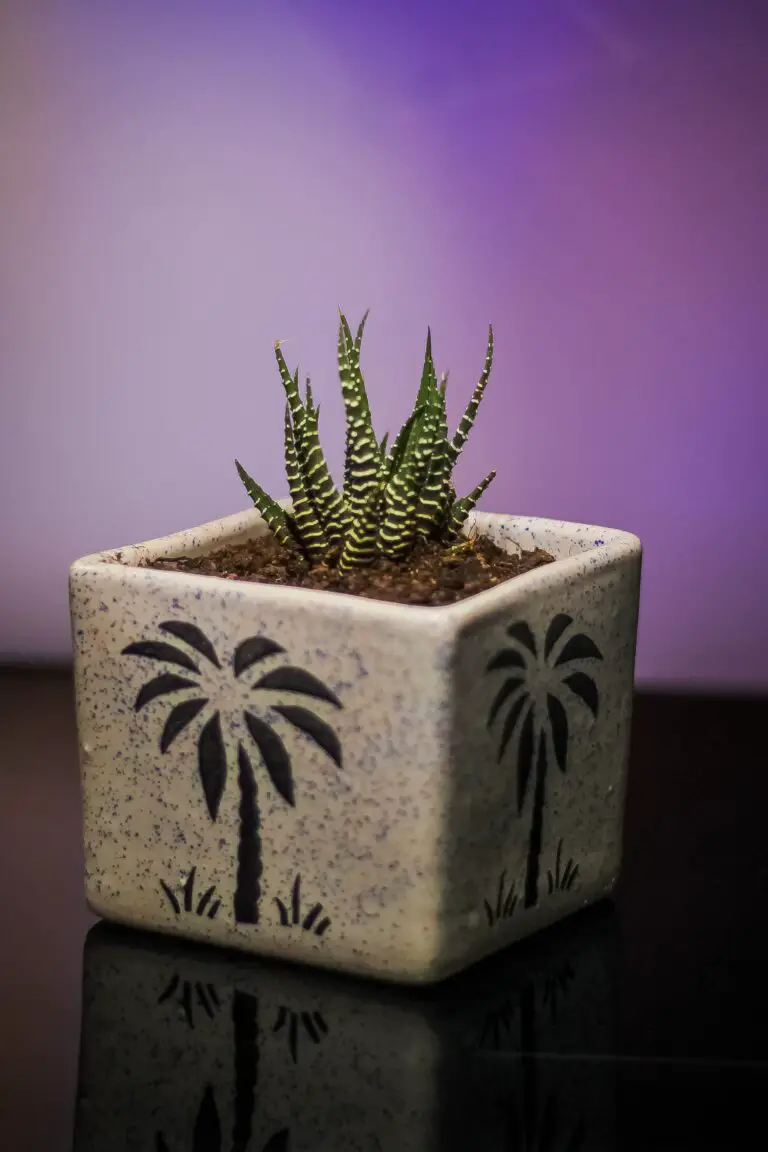
Often mistaken for its close relative, the Aloe, this South African native grows in rosettes and may surprise you with its ability to endure even when neglected. Perfect for the hustle and bustle of modern living, it asks so little: some indirect sunlight and a sip of water now and then. In fact, overwatering is more of a foe than forgetfulness for this plucky plant.
If you’re curious to uncover the secrets to a happy and healthy Zebra Plant, there’s a wealth of knowledge at Planting101, a treasure trove for succulent enthusiasts looking to expand their green thumb repertoire. Here’s a sneak peek: well-draining soil and a pot with good drainage are your best bets for keeping Haworthia fasciata perky and prosperous.
For those well-versed in the succulent world or just beginning their journey, embracing the subtle allure of the Zebra Plant is a joyous endeavor. You’ll find a clan of fellow aficionados and a trove of tips on mastering succulent care on our very own Prickly Petals website. Whether it’s nestled among a medley of other succulents or standing solo, Haworthia fasciata is a testament to nature’s wonder, weaving its striped magic into our hearts and homes.
Haworthia Fasciata vs. Similar Species
Step into the wondrous realm of succulents, and you may find yourself mesmerized by the charming Haworthia Fasciata, often hailed as the ‘Zebra Plant.’ At first glance, this succulent stunner can easily be confused with its lookalike kin, but fret not! We are here to tease apart these subtle differences with the keen eye of a botanist at a plant masquerade ball.
Imagine lounging in your sunlit living room, your gaze alighting upon the compact, rosette-forming Haworthia Fasciata. Its telltale white bands streak across the dark green leaves like the brushstrokes of an abstract painter—a pattern mesmerizingly similar to other Haworthias. Yet, upon closer examination, you’ll note that the Fasciata’s leaves are plumper and exhibit a glossy, almost window-like transparency at the tips. This is where the magic of identification lies, in these lustrous leaf-tip windows that invite sunlight into the photosynthetic party happening beneath the surface.
In contrast, let’s consider the Haworthia Attenuata, which often gets mistaken for our belovèd Fasciata. Both have that zebra-like striping, yet the Attenuata flaunts a bolder, more pronounced bumpiness to its leaves—almost as if it’s perpetually bristling at an amusing secret it’s not keen to share. These tactile bumps are your tactile treasure map to telling them apart.
Now witness the quiet beauty of the Haworthia Limifolia. As you take your morning tea, you can’t help but admire its ridge-like ornamentation, which spirals like the cross-stitch on a medieval corset. This pattern, reminiscent of the cobbled streets in quaint European villages, is distinctive from Fasciata’s simpler stripes.
Through this whimsical exploration of leaves, stripes, and textures, we not only enrich our botanical lexicon but also deepen our appreciation for these stoic miniature soldiers of the succulent brigade. Indulge in the experience of tending to these evergreen gems, and find yourself a horticulture sleuth, unraveling the delightful mysteries of the Haworthia Fasciata and its similar, yet distinct, relatives.
Optimal Growing Conditions for Your Zebra Plant
Let’s dig a bit deeper into the thriving environment of the Haworthia fasciata, commonly admired as the Zebra Plant. As captivating as the stripes on a zebra, the allure of these succulent leaves can brighten up any nook. But how do you create the perfect habitat for these green gems to flourish?
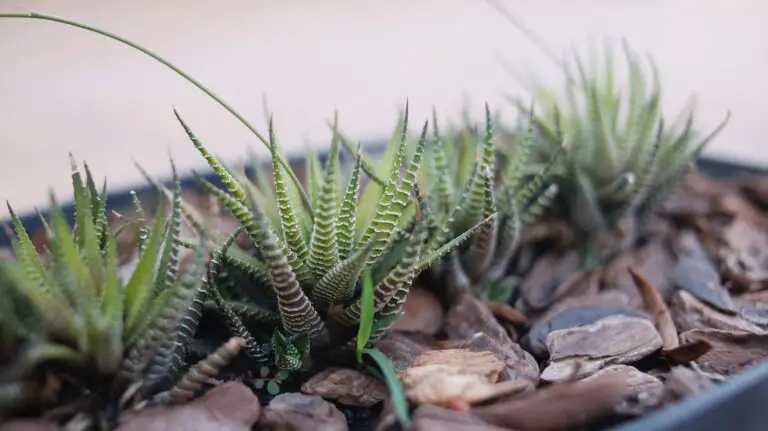
Starting with light requirements, your Zebra Plant does relish bright light but not the scorching afternoon sun. Think of it like your skin on a beach day — a bit of gentle morning sunshine is delightful, but avoid the midday burn. East-facing windowsills can be their happy places, offering the soft sun’s caress they crave.
Temperature and Humidity: The Perfect Climate Cocktail
Haworthia fasciata admires a moderate climate, much like what you’d prefer for a springtime outdoor brunch. Temperatures hovering between 65-75°F (18-24°C) during the day are ideal. However, don’t let the nightfall drop the thermometer too much; stay above 50°F (10°C) to keep your Zebra Plant snug and secure.
Their humidity requirements are like their temperature needs: not too high, not too low, just right! A regular home’s humidity level is often adequate, and they aren’t fussy for the extra mist – like choosing the right coat for the weather, they’re quite adaptable to what’s on offer indoors.
Creating a stable environment for your Zebra Plant isn’t just about mimicry of its natural habitat; it’s about crafting a space where it can reach its full potential. And if you’re pondering over the best soil setup, remember that well-draining soil is like choosing the right pair of shoes — absolutely essential for health and comfort.
In essence, Zebra Plants require that sweet spot of care — not overly pampered and by no means neglected. Treat them right, and they will grow to be the mini African zebras of your plant collection, with splendid stripes and a robust form that’s tough to overlook.
Planting and Potting Essentials
Ever wondered what it takes to make your Haworthia Fasciata thrive in its new pot? Well, the secret lies in understanding what this succulent craves for a cozy and nutritious abode. Let’s start with the soil—this is where the magic happens, and getting it right is your ticket to a happy, healthy succulent.
The Right Soil Mix
First things first, you’ll want to pick a soil that’s well-draining. Think about it: Haworthias hail from arid environments where water comes at a premium. So, they’ve adapted to get by with less, and soggy soil is their worst nightmare. A mix of potting soil, sand, and perlite or pumice will ensure that water passes through quickly, avoiding any unwelcome dampness that could lead to root rot. For an in-depth dive into the perfect succulent soil mix, check out this step-by-step guide. It’s a treasure trove of information that will help give your Haworthia boatloads of joy.
Choosing the Ideal Pot
Now, onto the pot. It’s not just a container; it’s the home for your succulent’s delicate roots. The size matters—a pot that’s too big will hold too much moisture, while one that’s too small will cramp your plant’s style. Aim for a Goldilocks pot: just right. And that means a pot that gives your Haworthia a little room to grow, but not so much that it feels lost in a vast desert of soil. Also, make sure the pot has a drainage hole. It’s non-negotiable unless you fancy a miniature swamp.
Imagine repotting your beloved succulent into its optimally cozy new home, with just the right soil blend and a perfectly fitting pot. Bearing witness to your plant’s newfound vibrancy and growth is a reward in itself. If you’re unsure how to pull this off, watch this helpful that demonstrates the effortless art of potting a Haworthia.
To sum up, the perfect potting mix and a hospitable home lay the foundation for your Haworthia Fasciata’s success. Heed these tips, and you’ll see just how magnificent these resilient, charm-packed succulents can be when their roots are well-nurtured.
Watering Schedule for Haworthia Fasciata
Let’s dive right into the essence of succulent care – hydration! Haworthia fasciata, a gem among succulents, demands a watering routine that’s as unique as its pearly leaves. It’s not just about pouring water; it’s about understanding the rhythm of this desert jewel. Your Haworthia doesn’t fancy a swim; it prefers sips that echo the infrequent rains of its native South African homeland.
Imagine you’re a Haworthia fasciata basking in the dappled shade. Your roots eagerly await the next rain, storing every droplet in plump leaves. That’s how your succulent feels about water – it’s precious and must be treasured. To mimic nature, let the soil become completely dry between watering. It’s like waiting for a rain shower after a dry spell – refreshing and vital for your plant’s survival.
Identifying Thirst in Your Haworthia
Overwatering is the kryptonite of Haworthia care, leading to a host of issues like root rot. Nobody wants their succulent to go from firm to mushy, right? So, let’s learn the tell-tale signs of thirst. Your plant might droop, its leaves may lose their luster, but a quick drink can turn things around. Just be cautious – it’s easier to fix a dry Haworthia than one that’s waterlogged!
Now, let’s address the elephant in the room – consistency. Remember, consistency doesn’t mean a fixed schedule. Say goodbye to the ‘Water on Wednesdays’ mantra and hello to a ‘Check-the-soil’ approach. This way, you can ensure the perfect drought and downpour cycle that Haworthia fasciata craves.
We’re not dealing with an average plant; we’re nurturing a resilient being that knows how to ride out the dry spells. When watering your succulent, think about how those sporadic yet life-sustaining showers bring the arid South African landscapes back to life. That’s the refreshing gulp your Haworthia desires – a drink that revives and rejuvenates.
It might seem like a delicate balance, but once you align with the natural needs of your Haworthia fasciata, you’ll see it thrive. Keep your eyes open, your watering can ready, and listen to the soil. It’ll speak to you, whispering when it’s parched, guiding you to a watering schedule that’s less about routine and more about resonance with nature’s ebb and flow.
Feeding and Fertilization
Think of fertilization as the secret ingredient that boosts your Haworthia fasciata‘s vigor and charm. Just as we thrive with the right diet, so does the Zebra Plant. It hankers for a nutrient mix that’s as unique and exotic as its striking stripes. But beware, overfeeding is the equivalent of too much dessert—it can do more harm than good!
Picture this: It’s spring, the season of growth. Your Haworthia is waking up from its winter slumber, stretching out its leaves like arms craving sunlight. This is the perfect time to introduce a balanced, half-strength succulent fertilizer that will get your beloved plant in tip-top shape. Imagine those nutrients coursing through the roots, as essential as a morning coffee kickstarting your day.
As the seasons roll into the heat of summer, your green comrade will need a monthly feeding session to sustain its growth. Think of how a refreshing drink revitalizes you on a hot day. That’s what a good fertilize does for your Zebra Plant.
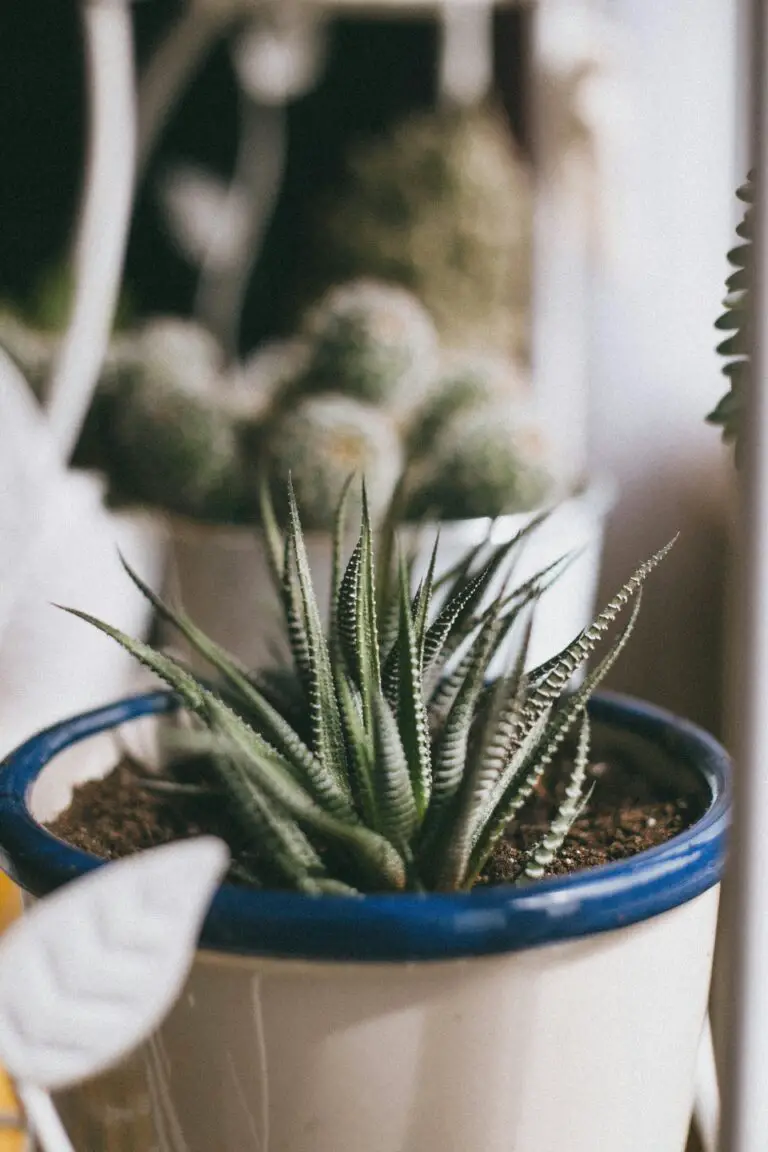
But when autumn leaves begin to fall, it’s time to ease off. Like us bundling up and settling in for winter, the Haworthia fasciata prefers to dine lightly before its restful period. A last half-strength feeding as summer ends is a farewell feast that helps it store energy for the colder months.
Remember, every Haworthia fasciata has its unique palette. Tailoring your feeding regimen to your specific plant will ensure you’re not under or over-seasoning this living art piece. A careful observer can detect what the plant needs from the coloring of its leaves and the robustness of its form, adjusting the feeding schedule like a chef perfects a recipe. After all, the right nutrition can take your Zebra Plant from surviving to thriving!
Pruning and Maintenance
For succulent enthusiasts, there’s a certain joy that comes from nurturing a Haworthia Fasciata to perfection. Keeping its zebra-striped leaves neat and its posture upright isn’t just about aesthetics; it’s a ritual that promotes the overall health and longevity of your beloved plant. The secret is in smart practices that contribute to a flourishing succulent, and it all starts with the snip of a leaf.
Imagine you’re a hairstylist, but instead of taming tresses, you’re sculpting a living piece of art. Each leaf of your Haworthia Fasciata is a potential masterpiece, and with precise pruning, you can elevate its beauty. Over time, lower leaves might dry up or get damaged. It’s completely normal, but don’t let them linger. By gently removing these parts, you make room for growth and prevent any potential rot that could harm your plant.
Maintenance isn’t just about cutting away the old; it’s also about nurturing what’s new. You might notice your Haworthia Fasciata pushing out tiny offshoots or ‘pups.’ These mini-me’s are signs of a happy plant, but they can also drain resources from the mother plant if left unchecked. When they’re big enough, carefully separate them from the main plant, and voilà, you’ve got new plants to spread the joy!
While pruning is essential, remembering the basics of Haworthia Fasciata care remains paramount. Ensure it gets bright, indirect sunlight, and be cautious with water; overwatering is the fast track to a succulent’s demise. Let the soil dry out between waterings, and use well-draining soil to keep those roots happy and healthy. With these simple steps, you’ll be the proud owner of a robust, vibrant Haworthia Fasciata.
As an example, meet Kevin. Kevin’s windowsill was once a graveyard of succulents past. But after learning the right techniques, his Haworthia Fasciata thrives, and pruning became his time of Zen. His secret? “Listen to your plant, and it will tell you what it needs,” he says as he snips off a dry leaf, making room for new growth.

Last but not least, patience is a virtue when it comes to succulent care. The Haworthia Fasciata isn’t in a rush, and neither should you be. Enjoy the process, learn from your plant, and remember that every cut, water, and beam of light contributes to a display worthy of any plant lover’s collection. Happy pruning!
Propagating Haworthia Fasciata Successfully
Imagine multiplying your cherished Zebra Plant’s charm, spreading its striped wonder throughout your home or garden. Propagating Haworthia fasciata isn’t just a hobby; it’s a creative journey, one where you transform a single plant into a collection of verdant gems. Let’s delve into the steps you need to take to ensure your propagation endeavors flourish.
The first step is identifying the “pups” or offsets your mother plant will produce. These tiny replicas appear at the base, ready to root and grow into individual plants. Wait until they’re about a third the size of the parent plant, ensuring they have a fighting chance when separated.

Separation is the next crucial phase. With a clean, sharp tool, carefully slice the connection between mother plant and pup. It’s like cutting an apron string—do it with precision and care. Allow the pup to callous for a day or two to prevent any nasty infections.
Now comes the planting. A well-draining, sandy succulent mix beckons. Nestle your Haworthia fasciata pup into its new home, and water sparingly. The goal is to encourage roots to seek moisture, building a strong foundation for your burgeoning succulent.
Let’s talk growth environment: bright, indirect light will be your Zebra Plant’s sun-soaked stage, while avoiding direct sunlight’s scalding spotlight. In a few weeks, you’ll witness the gratifying sight of new growth. A small victory, but a victory nonetheless in the plant propagator’s adventure.
Remember, patience is your co-conspirator in propagation. It can be weeks, even months, before those roots are robust enough to support an independent plant. But oh, when that moment comes—the pride of literally growing your green family is unparalleled. Keep a watchful eye for rot, underwatering, and pests that would love to derail your efforts.
So, gather your gardening gloves, arm yourself with knowledge, and embark on the rewarding quest of propagating Haworthia fasciata. Each new plantlet is a testament to your dedication and green thumb prowess. May your Zebra Plants thrive and your succulent landscape flourish!
Common Pests and Problems
Whether you’re a green-thumbed guru or a budding botanist, there’s always a new challenge around the corner with plant care. Haworthia Fasciata, your succulent sidekick, isn’t exempt from this rule. It’s essential to play detective and identify the nemeses nibbling at your plant. Let’s dive into the common culprits and show you how to keep your Haworthia healthy and happy.

Meet the Usual Suspects: Pests on Patrol
First up, we have mealybugs. Picture tiny, fluffy cotton balls of chaos sucking the vigor out of your plant. Imagine them tucked away under leaves and at the stem base, throwing stealthy soirees. Aphids, those pesky green invaders, are also drawn to your plant’s juicy offerings. Then there are spider mites; though nearly invisible, they spin their webs of worry across your Haworthia, causing discoloration and a dusty appearance.
Diagnosing Your Haworthia’s Health
Keep an eye out for signals that your plant is under the weather: stunted growth, discolored leaves, or a sad, sapped appearance. If your Haworthia seems lackluster, it’s time for action. Check the usual hangouts for these pests—under leaves, along the base—and you’ll often find the evidence of their encroachment.
Strategy for Salvation: Evicting Unwanted Guests
Don’t despair; your greenery’s guardians are here! Combat mealybugs with a cotton swab dipped in alcohol; show those trespassers the door. Should you encounter aphids, spritz them with a blend of water and a few drops of mild dish soap to send them packing. And for spider mites, introduce a humidifier or mist your plants regularly to disrupt their arid utopia.
Remember, prevention is better than cure. Quarantine new plants, check your succulents regularly, and ensure good air circulation to thwart these tiny terrors. With a bit of vigilance and care, your Haworthia Fasciata will be thriving, not just surviving!
Decorating With Haworthia: Aesthetic and Practical Tips
When it comes to sprucing up your indoor space, nothing adds a pop of nature and tranquility quite like the Haworthia Fasciata. This little gem, with its rigid, green leaves marked by white pearly bands, is the perfect accent for any room. But how do you blend it seamlessly into your decor while ensuring it flourishes? Let’s dive into some aesthetic and practical tips for showcasing your Haworthia.
Firstly, consider the lighting. Haworthia thrives in bright, indirect light, making it an ideal companion for that sunny shelf or desk near the window. Picture the silhouette of the sun casting a gentle glow on the leaves, creating a serene atmosphere in your study or living room. It’s not just about the plant’s health; the way light dances on the leaves amplifies the beauty of your space.
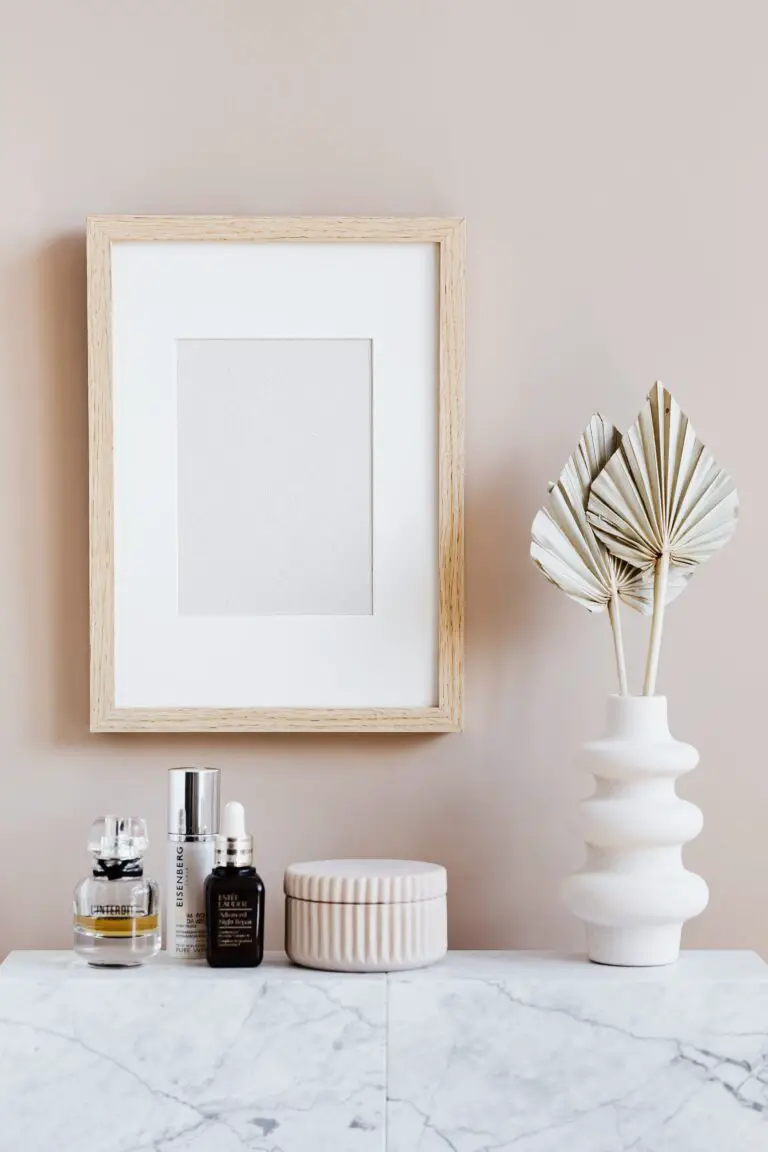
Moreover, Haworthia Fasciata is compact and hardy, asking for very little in terms of space or care. This makes it an excellent choice for those small, often-overlooked nooks that could use a touch of green. Imagine a neat row of these succulents on a floating shelf or as the centerpiece on your dining table, encased in terracotta pots that echo the warmth of the room.
And let’s talk versatility. Have you considered hanging planters? Suspend your Haworthia in a macrame holder against a backdrop of white or pastel walls for a bohemian chic look. Or pair it with larger plants to create a multi-tiered effect that draws the eye upward, making your ceilings appear higher and your rooms more spacious.
Now, for a touch of personalization, why not integrate your Haworthia into a mini succulent garden? Use a shallow, wide container and play with textures and colors by adding different succulents around it. This creates a delightful visual story on your coffee table or windowsill, and it’s a fun way to display your plant parenting prowess.
The bottom line: Haworthia Fasciata isn’t just another houseplant. It’s a living decor element that brings freshness and style to your interior space. With these tips, you’ll have a well-adorned abode where both you and your Haworthia can thrive.
Haworthia Fasciata Myths and Misconceptions
In the realm of succulent enthusiasts, Haworthia fasciata, commonly known as the Zebra Plant, is often surrounded by a halo of myths and tales as striped as its own leaves. Let’s dive into the heart of these misconceptions and strip away the fiction to reveal the botanical truths hidden beneath.
Myth #1: ‘No Sun, No Fun’ is The Way to Go!
First up, let’s tackle the widely held belief that Zebra Plants thrive in the darkest corners of your home. While it’s true that they don’t fancy the scorching rays of direct sunlight, these striped beauties are definitely not the vampires of the plant world. In fact, they relish bright, filtered light to flourish. So, if you’ve tucked your Haworthia in a shadowy nook, think again! It’s craving that sweet spot where the light is just right.
Myth #2: Watering Woes – The ‘Drench or Drought’ Dilemma
Next, let’s splash into the ‘water them a lot or not’ confusion. Many believe you must either douse your Zebra Plant like a fire or leave it thirsty as a desert. In reality, Haworthia fasciata prefers a ‘Goldilocks’ watering regime – not too much, not too little. Overwatering can lead to root rot, while under-watering can leave it parched. The key is a consistent, moderate watering schedule, allowing the soil to dry out between drinks.
Myth #3: ‘Feed Me Seymour!’ – The Feeding Frenzy Fallacy
Now, let’s nibble on the notion that these plants need frequent feeding. Contrary to the carnivorous cries of ‘Feed me!’ from that famous Hollywood flora, Zebra Plants do not require constant fertilization. In fact, feeding them once in the spring with a half-strength succulent fertilizer is usually plenty. Any more, and you might just find yourself with a nutrient burn scenario on your hands. Moderation is the mantra!
Wondering what a happy and healthy Haworthia fasciata actually looks like? Check out this insightful video for some real-life plant perfection:
So, there you have it – the myths debunked! Remember, like any succulent, your Haworthia fasciata is quite the survivor, but it certainly appreciates when you get its care just right. By understanding its true needs, you can ensure your Zebra Plant continues to stripe a pose, captivating onlookers with its resilient and striking charms.
Frequently Asked Questions
Welcome to the delightful world of Haworthia Fasciata! You’ve got questions, and boy, do we have answers. Let’s dive into the nitty-gritty of these succulent sensations!
What Makes Haworthia Fasciata Stand Out from Other Succulents?
Picture this: compact rosettes of dark green, pointy leaves striped with white that sparkle like a night sky peppered with stars. That’s your Haworthia Fasciata, a jewel among succulents. Not to mention, it’s as tough as it is pretty—resilient to common newbie mistakes!
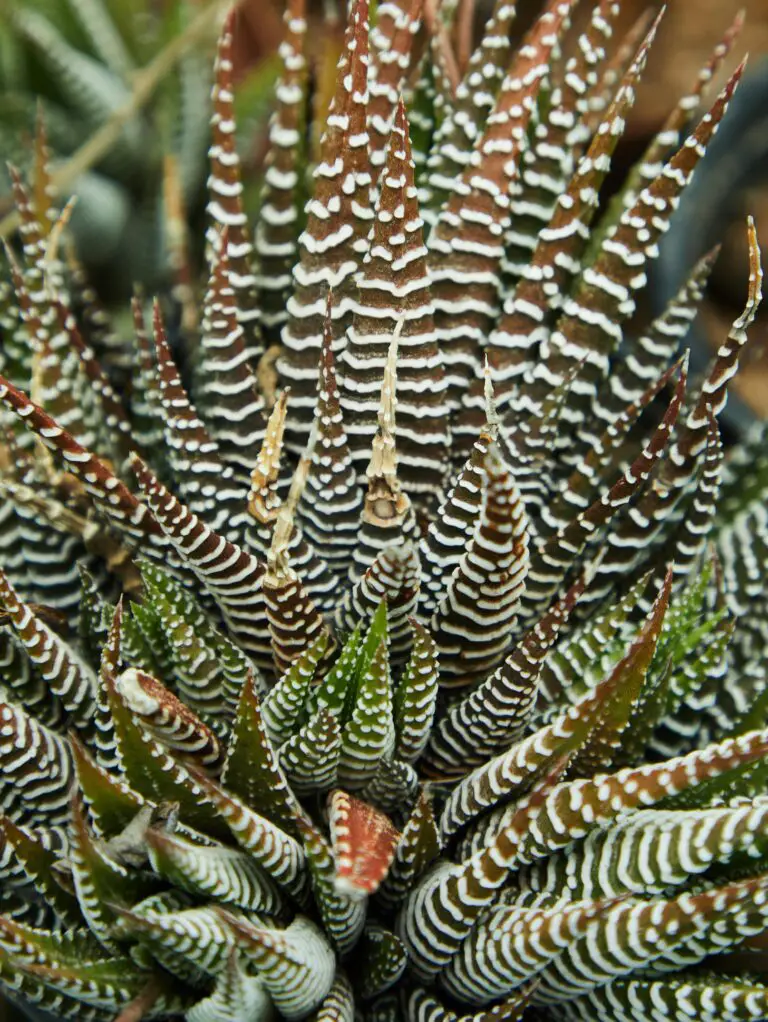
Does Haworthia Fasciata Need a Lot of Sunlight?
Imagine you’re enjoying a lazy weekend under a shady tree—that’s how Haworthia Fasciata feels about sunlight. It thrives in bright, indirect light. Too much direct sun, and it’s like, “Ouch, that’s hot!” So, a spot near a sunny window with a sheer curtain is its happy place.
What’s the Best Watering Routine for Haworthia Fasciata?
Think of watering a Haworthia Fasciata like grabbing a coffee with a friend: Don’t overdo it, or you’ll get jittery! Let the soil dry out between waterings, and when you do water, make it a good one—soak it thoroughly but ensure it’s not sitting in water. Overwatering is akin to sitting in a wet sock all day—nobody wants that!
Is Propagating Haworthia Fasciata Easy?
You bet it is, and it’s as rewarding as sharing your favorite recipe! Offset removal is the go-to method—just gently tug away the little pups and plant them. With a touch of patience, you’ll have a whole assembly of these beauties!
Can I Grow Haworthia Fasciata Indoors All Year?
Absolutely! Keep it in a cozy spot with steady temperatures, and it’ll be Your Indoor Plant Buddy throughout the seasons. It’s like having a reliable pal who’s always just chilling at your pad.
Myths About Haworthia Fasciata: Are They True?
Rumor has it that Haworthia Fasciata brings good fortune. While we can’t promise you’ll win the lottery, having one of these plucky plants can definitely cheer up your space—so we say it’s a win either way!
These are just a few tidbits about the fantastic Haworthia Fasciata. When considering this succulent for your collection, just think simplicity and a smidge of attention. Do it right, and your thumb will be greener than the stripes on its leaves!
